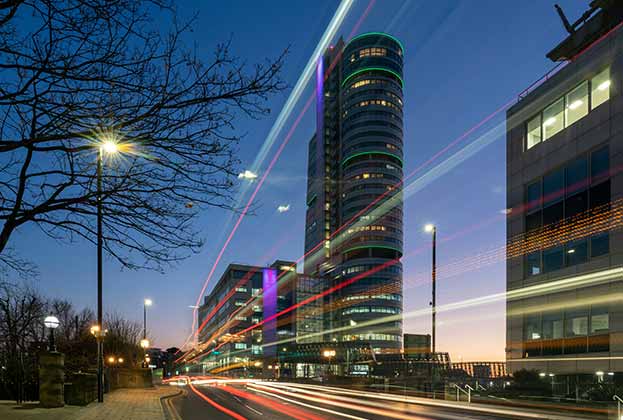The actions of some of the world’s biggest tech companies have captured the headlines in recent months, and come after a period of rapid expansion during the pandemic-induced tech boom. With a weaker economic backdrop some tech companies have reduce headcount – but what impact is this having on office markets?
Firstly, recent redundancy announcements, while having an obviously distressing impact on the individuals involved, should be seen in the context of the expansion tech companies have experienced in recent years. Headcounts remain well above pre pandemic levels, although that will mean little to those now without a job. While some high profile large tech companies are consolidating, many of those operating in faster growing tech niches such as DeepTech, CleanTech and AgTech continue to expand.
Secondly, not all markets are feeling the impact alike. In the US, where many tech companies originate, tech occupiers took a much greater share of office leasing in the last five years than in most of their counterparts in Europe and Asia.
We surveyed agents across Savills global network and found that in the US, tech tenants are downsizing in just over half (51 per cent) of markets, while only a quarter (26 per cent) of US markets reported that non-tech occupiers were downsizing.
Outside the US, tech-heavy Dublin, Amsterdam, Stockholm and Singapore stood out for reporting more downsizing among tech occupiers than non-tech occupiers.
That, in turn, is bringing more sublease space to the market. This is particularly the case in the US: in San Francisco 10 per cent of office inventory was available for sublet at the end of last year, of which 73 per cent was given back by the tech sector. There’s a similar trend in Dublin which has seen a rise in sublease space from major tech companies. Those companies had committed to space in the two years prior when vacancy rates were especially tight and are now reassessing their needs.
One benefit to the wider market is that this potentially frees up space for other companies. In the case of the highest quality office space, that’s particularly beneficial at a time when demand for best-in-class is still high. Another trend we’re seeing is rising demand for flexible space, particularly in Asia Pacific, as tech occupiers are attracted to flexible ‘plug and play’ options in uncertain times.
But while recent tech occupier activity has affected some office markets, other trends are arguably having a much greater impact. The shift to hybrid working was already leading some tech occupiers to change their strategies. Corporate occupiers, with carbon footprints and employee wellbeing front and centre, are demanding certified, well-designed and well-located office spaces that can help attract and retain staff.
While the type of space in demand may be changing, the office will remain integral as a place to collaborate, share ideas, and instil company values. Likewise, long term, tech companies are likely to make up a sizeable amount of occupier activity in many markets.
Further information
Real Estate Insights: Tech Cities 2023 – where’s best at fostering tech growth?

-impact-the-office-sector(1).jpg)

.jpg)






